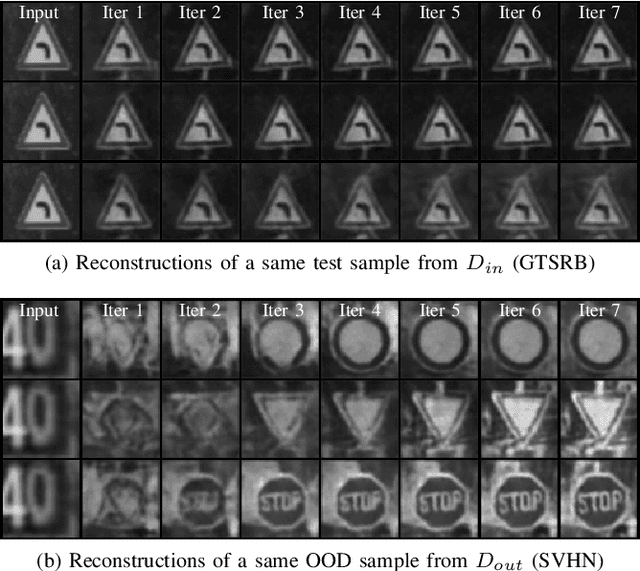Autoencoder Attractors for Uncertainty Estimation
Paper and Code
Apr 01, 2022



The reliability assessment of a machine learning model's prediction is an important quantity for the deployment in safety critical applications. Not only can it be used to detect novel sceneries, either as out-of-distribution or anomaly sample, but it also helps to determine deficiencies in the training data distribution. A lot of promising research directions have either proposed traditional methods like Gaussian processes or extended deep learning based approaches, for example, by interpreting them from a Bayesian point of view. In this work we propose a novel approach for uncertainty estimation based on autoencoder models: The recursive application of a previously trained autoencoder model can be interpreted as a dynamical system storing training examples as attractors. While input images close to known samples will converge to the same or similar attractor, input samples containing unknown features are unstable and converge to different training samples by potentially removing or changing characteristic features. The use of dropout during training and inference leads to a family of similar dynamical systems, each one being robust on samples close to the training distribution but unstable on new features. Either the model reliably removes these features or the resulting instability can be exploited to detect problematic input samples. We evaluate our approach on several dataset combinations as well as on an industrial application for occupant classification in the vehicle interior for which we additionally release a new synthetic dataset.
 Add to Chrome
Add to Chrome Add to Firefox
Add to Firefox Add to Edge
Add to Edge